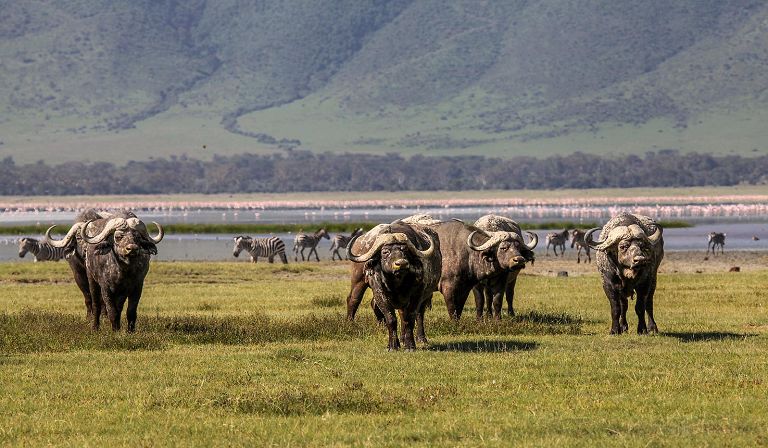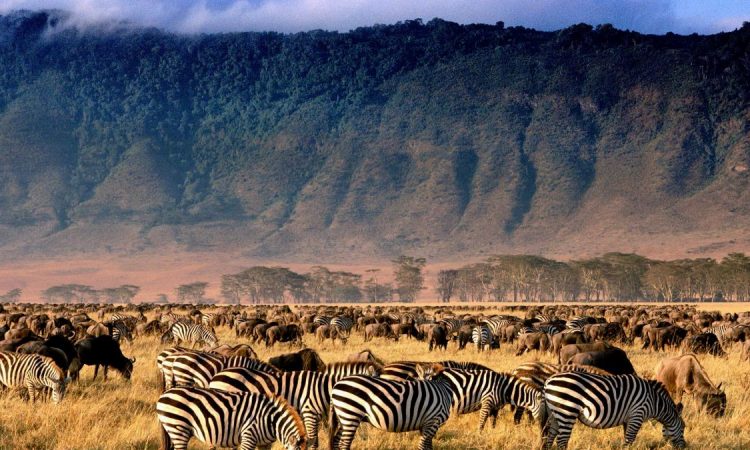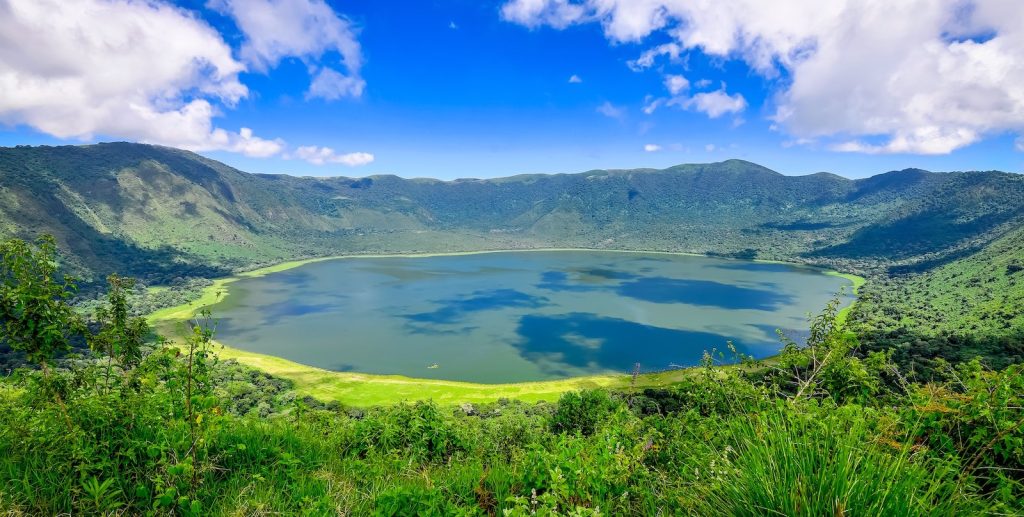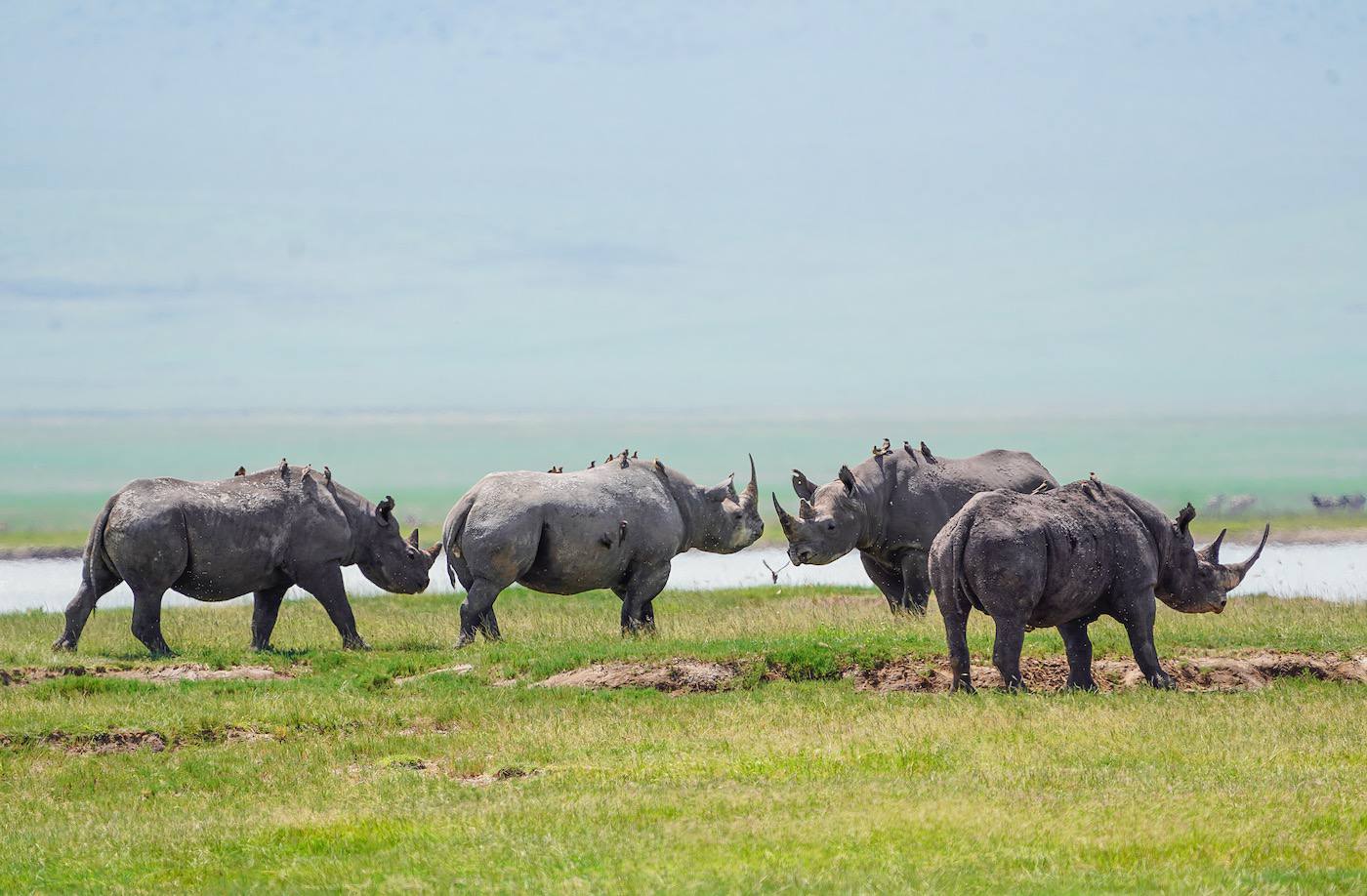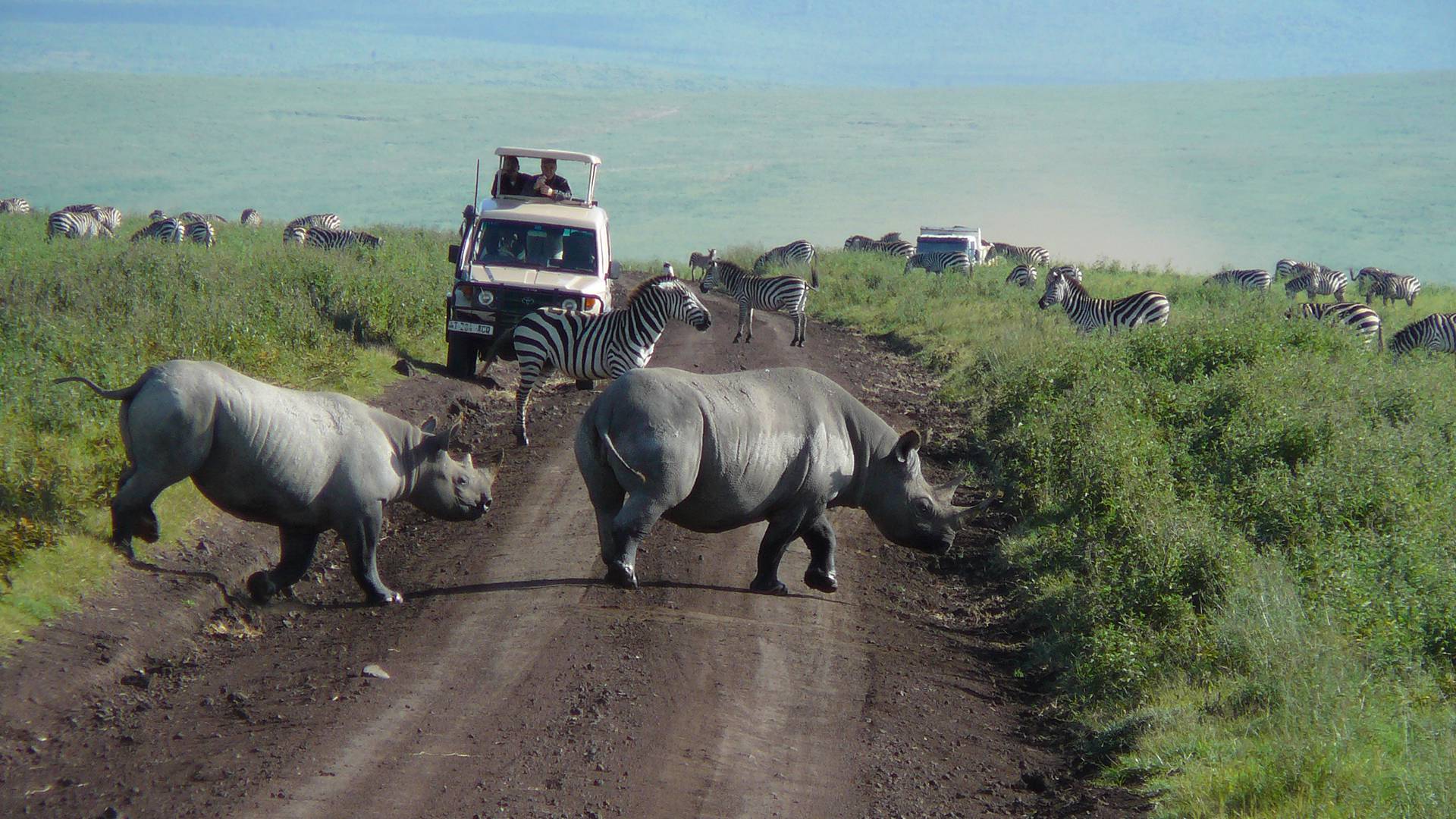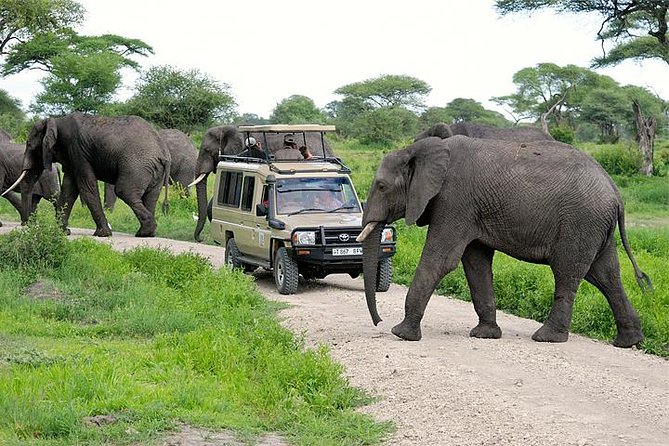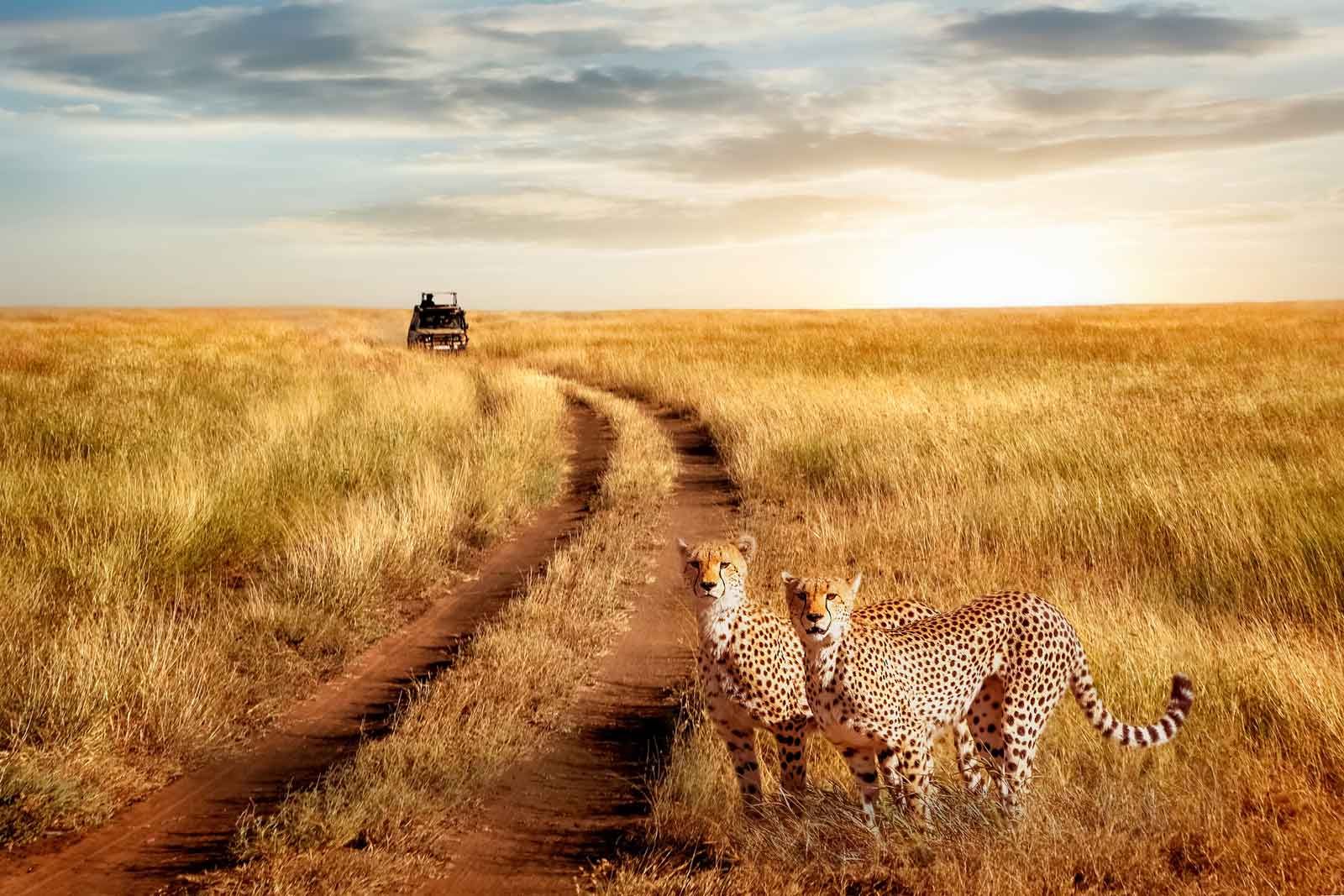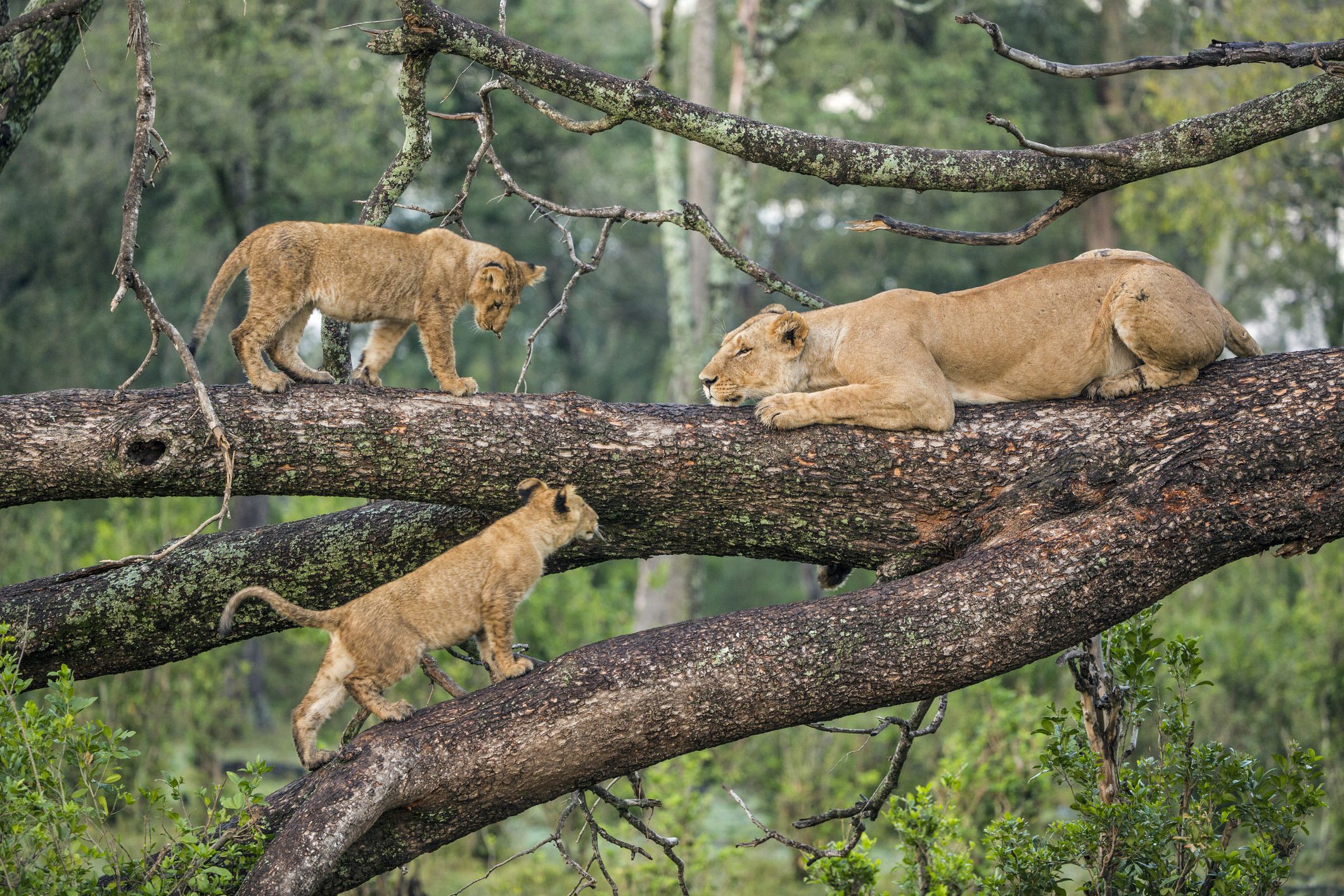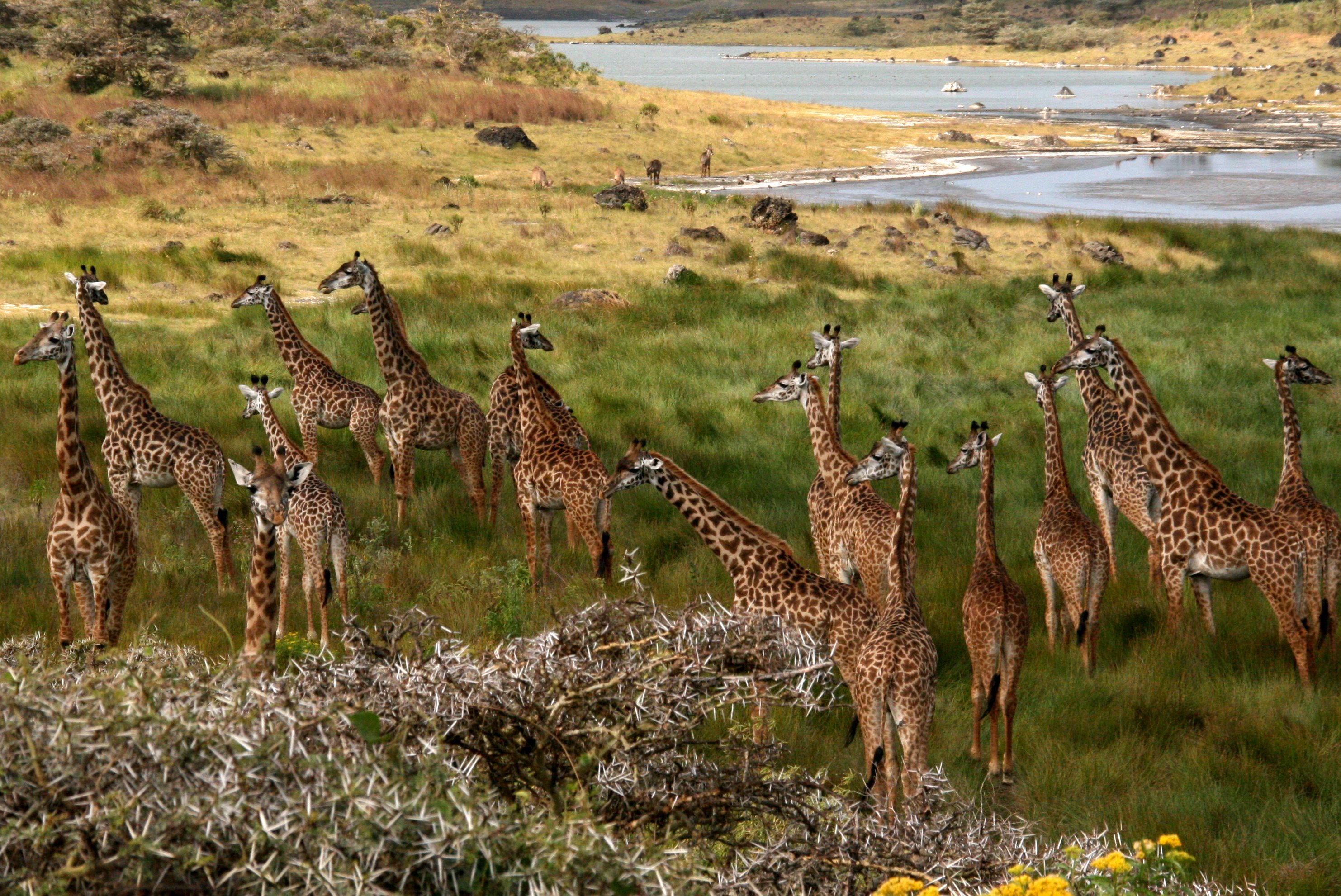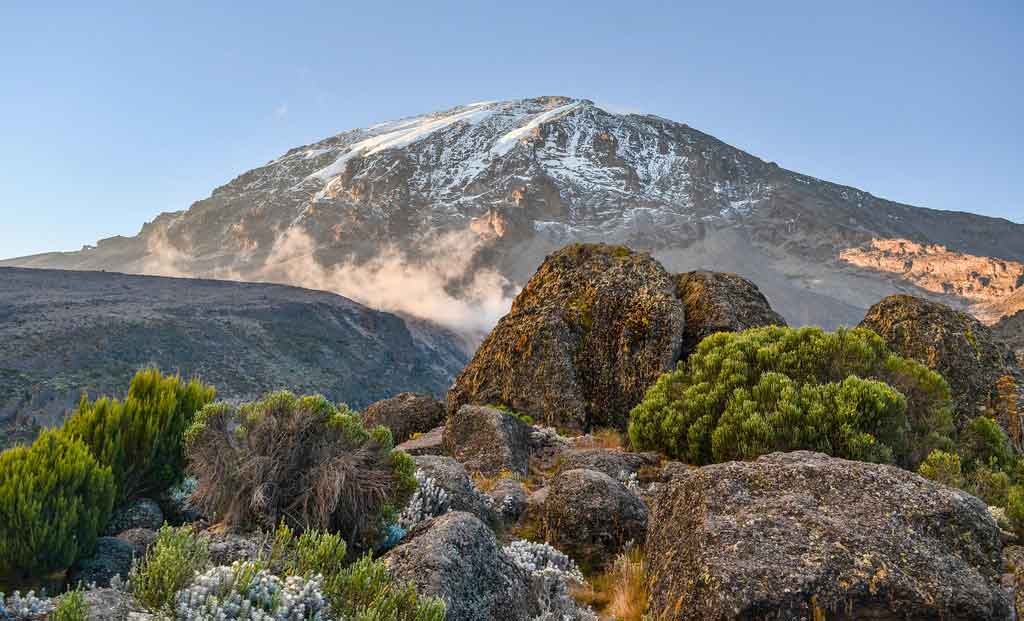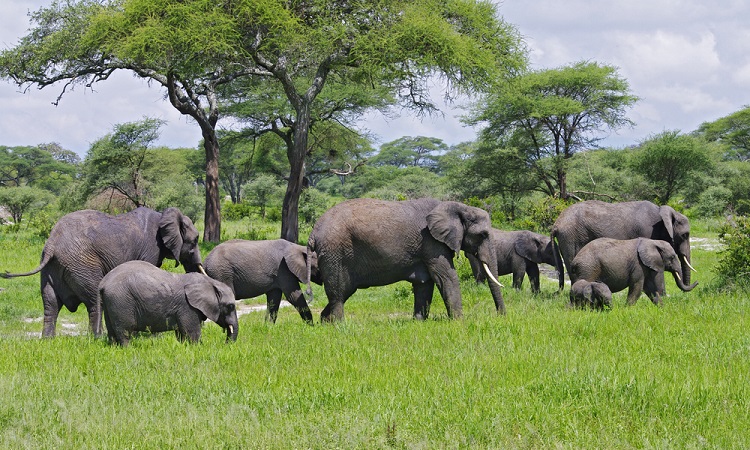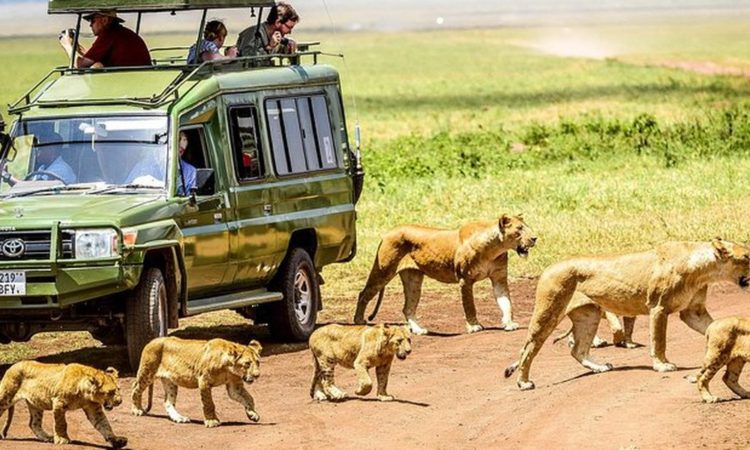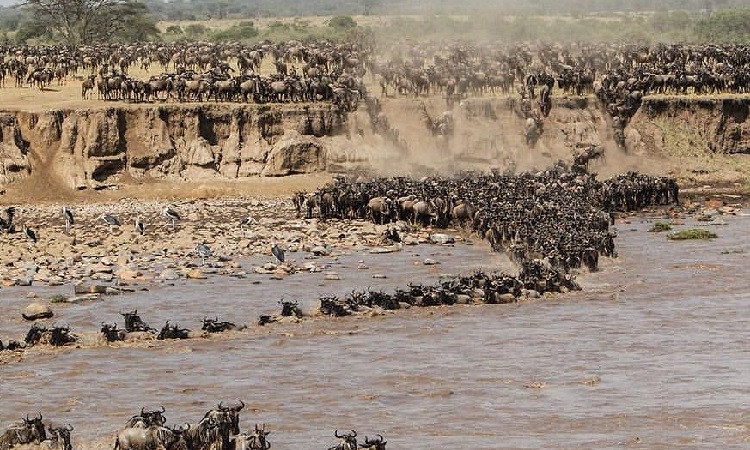Ngorongoro Conservation Area Overview
The Ngorongoro Conservation Area (NCA) is a UNESCO World Heritage Site located in
northern Tanzania. Covering approximately 8,292 square kilometers, it is a unique blend of
wildlife conservation, cultural heritage, and human habitation, as the Maasai people live
harmoniously with the wildlife. The crown jewel of the area is the Ngorongoro Crater, the
world's largest inactive, intact, and unfilled volcanic caldera, which serves as a haven for
diverse wildlife, including the iconic "Big Five" (lion, leopard, elephant, rhino, and
buffalo).Ngorongoro’s landscape is a mosaic of grasslands, forests, highland plains, and
volcanic peaks, providing habitats for an incredible variety of flora and fauna. Its
archaeological sites, like Olduvai Gorge, are also significant for understanding human
evolution
The crater hosts one of the densest populations of wildlife in Africa, with an estimated 25,000
to 30,000 animals living within its walls. It is a year-round habitat for many species because
of its permanent water sources and abundant grazing.
Key Animals
1. Big Five:
o Lion: Large prides roam the plains.
o Black Rhino: The crater is one of the few places in East Africa where black
rhinos can be seen.
o Elephant: Mostly older, solitary bulls.
o Leopard: Occasionally spotted in forested areas.
o Buffalo: Numerous herds are found grazing on the crater floor.
2. Other Notable Species:
o Zebras, wildebeests, gazelles, hippos, hyenas, jackals, and cheetahs.
o Birdlife: Over 500 species, including flamingos (on Lake Magadi), crowned
cranes, and ostriches.
3. Unique Species Interaction:
The enclosed nature of the crater creates unique
predator-prey dynamics, making it a hotspot for observing wildlife behavior
The Ngorongoro Crater is home to an extraordinary variety of animals, each with unique
behaviors and characteristics. Below is an in-depth look at some of the most iconic species
found in the crater and what makes them special:
1. Lions
Behavior:
o Lions in the crater live in prides consisting of related females, cubs, and a few
dominant males.
o They are territorial and use roaring to communicate and mark their presence.
o Lions are mostly active during early morning and late afternoon, spending the
hottest parts of the day resting.
Characteristics:
o Crater lions tend to have smaller prides compared to those in the Serengeti due
to the relatively confined space.
o They are opportunistic hunters, preying on wildebeest, zebras, and buffalo.
o Inbreeding can be a challenge for the population due to their isolation in the
crater.
2. Black Rhinos
Behavior:
o Black rhinos are solitary animals, except for females with calves.
o They are highly territorial and can be aggressive if threatened.
o Most active during early mornings and evenings, they rest during the heat of
the day.
Characteristics:
o One of the last strongholds for critically endangered black rhinos in Tanzania.
o They are browsers, feeding on bushes, shrubs, and small trees.
o Known for their poor eyesight but excellent sense of smell and hearing.
3. African Elephants
Behavior:
o Elephants in the crater are mostly older bulls, as family herds prefer the
surrounding highlands.
o They are peaceful but can become defensive if provoked.
o Elephants are social animals, and bulls often form small groups or roam alone.
Characteristics:
o Their large size helps them dominate other species around waterholes.
o Elephants in the crater feed on grass and aquatic vegetation near swamps.
o They are vital to the ecosystem, helping to shape the environment by
uprooting small trees and shrubs.
4. Buffaloes
Behavior:
o Buffaloes are gregarious animals, living in herds that can range from a few
individuals to large groups.
o They are highly protective and will form defensive circles when threatened by
predators.
o Active throughout the day but prefer early morning and late evening.
Characteristics:
o Known for their strong build and sharp horns, buffaloes are formidable
opponents for predators like lions.
o They are grazers, feeding mainly on grass found on the crater floor.
5. Wildebeests
Behavior:
o Wildebeests are highly social, forming large herds that migrate in search of
food and water.
o They are often seen grazing alongside zebras, which act as sentinels for
predators.
o Known for their synchronized birthing season, which helps protect calves
from predation.
Characteristics:
o They are strong runners, capable of reaching speeds of up to 80 km/h to
escape predators.
o Wildebeests have excellent endurance and can travel long distances.
6. Zebras
Behavior:
o Zebras live in family groups led by a dominant stallion and are often found in
mixed herds with wildebeests.
o They use vocalizations and body language to communicate, such as braying
and ear movements.
o Zebras are vigilant, relying on their sharp senses to detect predators.
Characteristics:
o Their distinctive stripes act as camouflage and a deterrent against biting flies.
o Zebras are grazers, feeding primarily on grasses, and can digest tougher
vegetation than many other grazers.
7. Hyenas
Behavior:
o Hyenas in the crater live in clans dominated by females.
o They are both skilled hunters and scavengers, often stealing kills from other
predators.
o Vocalizations, such as whooping and cackling, are used for communication.
Characteristics:
o They have powerful jaws capable of crushing bones to access marrow.
o Hyenas are highly intelligent, often working together to hunt or steal food.
8. Leopards
Behavior:
o Leopards are elusive and solitary, often seen in wooded areas along the crater
rim or near water.o They are nocturnal, primarily hunting at night and resting during the day.
o Known for their stealth, they ambush prey and drag it into trees to avoid
scavengers.
Characteristics:
o Leopards have a muscular build and are skilled climbers.
o Their spotted coats provide excellent camouflage in the forested areas.
9. Hippos
Behavior:
o Hippos spend most of their time submerged in water during the day to stay
cool.
o They come out at night to graze on grass near water sources.
o Although they appear docile, hippos are highly territorial and can be
aggressive.
Characteristics:
o They are herbivores, consuming large amounts of grass daily.
o Hippos have thick skin that protects them from predators and the sun.
10. Flamingos and Other Birds
Behavior:
o Flamingos gather in large flocks around Lake Magadi in the crater, feeding
on algae.
o Birds like crowned cranes, kori bustards, and ostriches are common sights.
o Migratory birds arrive during the wet season, enhancing the area's
biodiversity.
Characteristics:
o Flamingos are filter feeders, using their specialized beaks to sift algae and
plankton.
o Ostriches are the largest birds in the crater, known for their speed and ability
to defend themselves with powerful kicks.
Other Species in Ngorongoro Crater
Cheetahs: Found on the crater floor, relying on speed to hunt smaller prey like
gazelles.
Elands: The largest antelopes, often seen grazing on the crater floor.
Warthogs: Common grazers, known for their habit of kneeling while feeding.
A shallow alkaline lake in the crater floor, attracting large flocks
of flamingos and other water birds. Hippos are also commonly seen wallowing
here.
A lush forested area near the crater floor where elephants, leopards,
and monkeys can often be spotted.
A freshwater spring that attracts animals year-round,
providing a perfect spot for close-up wildlife photography.
A significant pale anthropological site located outside
the crater, known as the "Cradle of Mankind," where some of the oldest human
fossils have been discovered.
The Ngorongoro Conservation Area is unique in allowing human habitation alongside
wildlife. The Maasai people live in harmony with the land and their cattle graze near the
crater rim. Visitors can engage in cultural tours to learn about their traditions, dress, and daily
life.
Ngorongoro Crater offers one of the best safari experiences in Africa.
Game Drives: Typically last 4–6 hours as the crater is a contained area with plenty of
wildlife in close proximity.
Photography: The dramatic scenery, with animals against the backdrop of the crater
walls, creates stunning visuals.
Bird watching: Ideal for spotting flamingos, raptors, and many other bird species.
